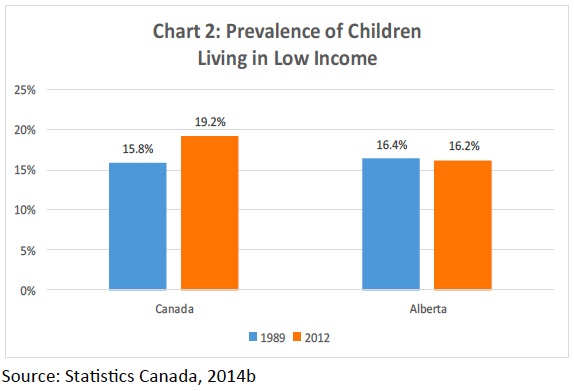November 24, 2014 marked 25 years since members of the Canadian Parliament voted unanimously to end child poverty in our country. The motion introduced by then-NDP leader Ed Broadbent supported abolishing child poverty in Canada by the year 2000.
Twenty-five years later, we are far away from reaching this goal.
Although Alberta has benefited from rapid economic growth, not everyone has shared in this prosperity. The Edmonton Social Planning Council, Alberta College of Social Workers and Public Interest Alberta released a new report on Nov. 24 showing that 143,200 children in our province lived below the low-income measure in 2012.
 The numbers in the report are depressing but important to recognize. According to the report, the percentage of Alberta children living in poverty is essentially unchanged since Mr. Broadbent’s motion was passed in 1989.
The numbers in the report are depressing but important to recognize. According to the report, the percentage of Alberta children living in poverty is essentially unchanged since Mr. Broadbent’s motion was passed in 1989.
Unemployment is not necessarily the main cause of child poverty in Alberta. The report shows that in 2011, a record high of 59.2% of children in poverty lived in a household where one or more persons were working full-time job.
According to the report, Alberta’s income inequality has increased faster than the national average, with the top 1% of earners seeing real income increases of over 60% since 1982 while the bottom half of income earners only saw a small increase of 3.4%.
The report also shows that in March 2014, more than forty-nine thousand Albertans accessed food banks, an increase of 2.3% from 2013 and 48.2% higher than in 2008.
The recent Homeless Count found 2,252 people without a home in Edmonton, an increase of 3.5% from 2012. The number of youth increased by 17% from 481 to 562. Of all those counted in the survey (including non-youth), 47% identified as being of Aboriginal heritage.
But despite an intense political focus in Alberta on low taxes and oil pipeline expansion, the discussion around income-inequality and eliminating poverty has gained some attention in recent years.
In March 2014, Edmonton Mayor Don Iveson named a task force on Poverty Elimination to develop a plan with recommendations to eliminate poverty in the city.
“There are over 100,000 Edmontonians living below the poverty line, 30,000 of whom are children. For me, that is not acceptable,” Mr. Iveson said in a press release earlier this year.
Speaking to a group of Edmontonians during a break from budget hearings last week, Mr. Iveson explained some of the ways Edmonton can help contribute to the reduction of child poverty through public library education programs and reduced-fee transit passes for low-income parents.
“Poverty elimination will be the result of good prevention,” Mr. Iveson said, as he explained the need for a renewed focus on the social determinants of health.
“If we don’t deal with some of those things proactively they can become policing challenges, which is the most expensive thing we do,” he said.
As city governments are limited in their resources compared to provincial and federal governments, he spoke to the need for municipalities to pressure MLAs to make much needed funding increases to Family and Community Support Services.
During the 2012 election, Progressive Conservative leader Alison Redford promised the creation of a ten year strategy to end poverty in Alberta, which would include a five-year plan to eliminate child poverty and a plan to address the root causes of poverty. Following Ms. Redford’s departure, it is suspected that a strategy will not be released until next year. But it remains unclear how Premier Jim Prentice will approach this issue.
Despite our prosperity, Mr. Prentice is pleading poverty due to slightly deflating world oil prices and is already suggesting education funding cuts are likely in next year’s budget.
It is shameful that child poverty in Canada still exits in 2014, twenty-five years after every Member of Parliament stood and committed to eliminating it by 2000. And in a wealthy and prosperous jurisdiction like Alberta, where we have the financial means and ingenuity to ensure every resident can live outside of poverty, there is no excuse why child poverty still exists.
Read the report: No Change: After 25 years of Promises it is Time to Eliminate Child Poverty.

